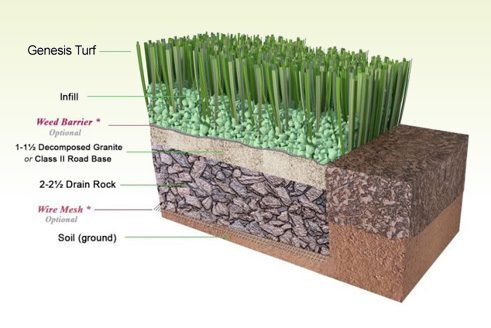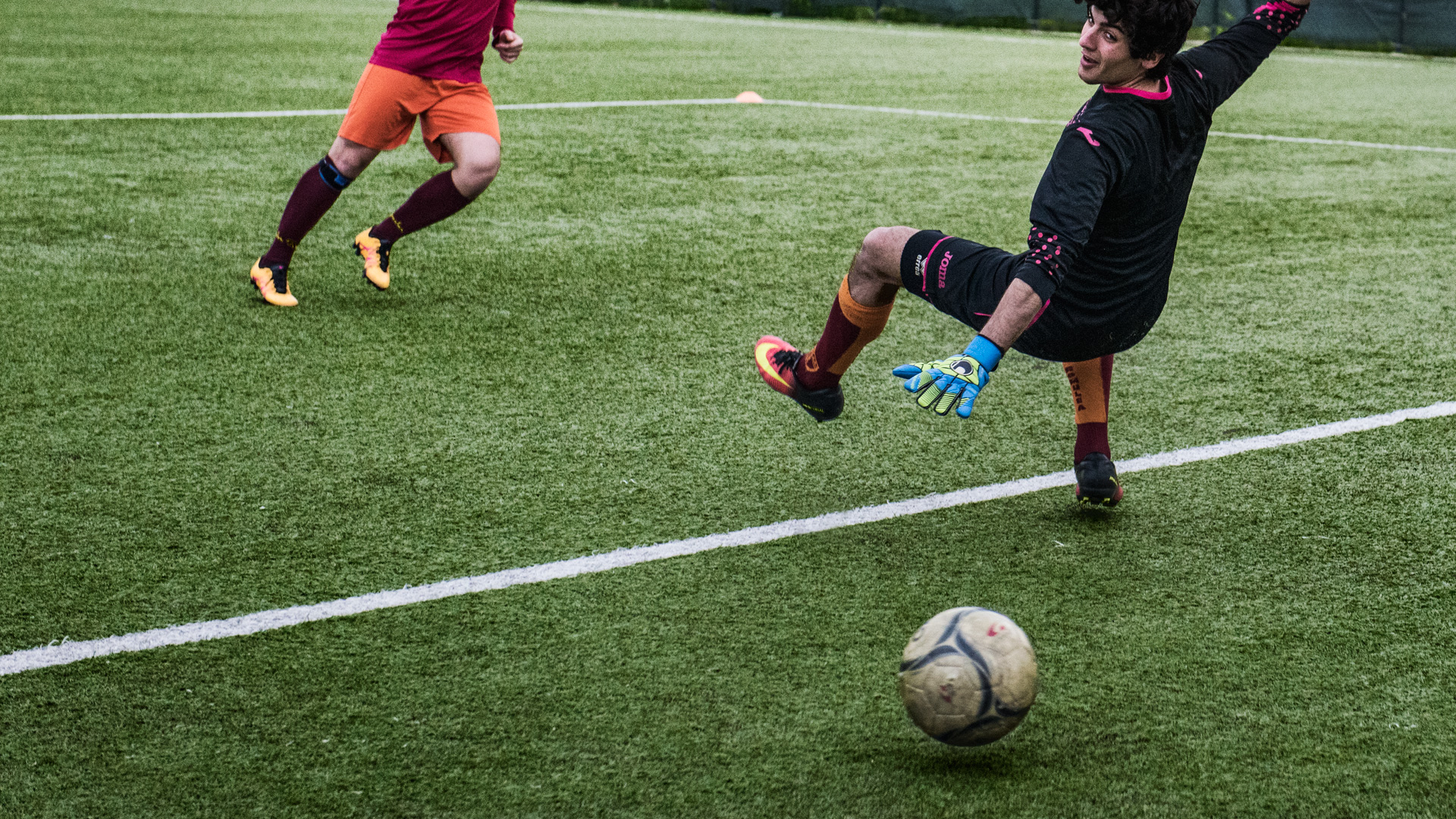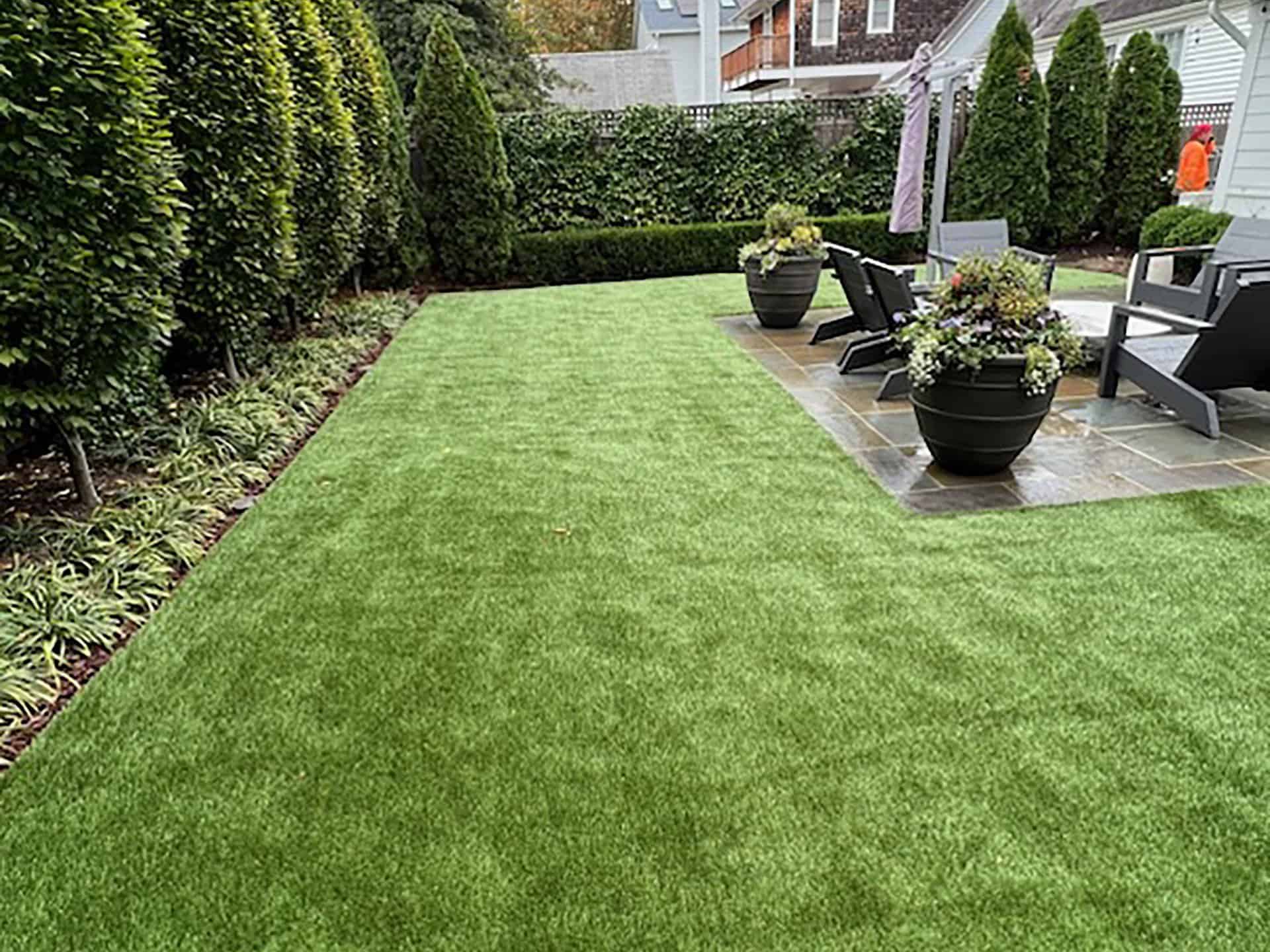Explore the Environmental Benefits of Opting for Synthetic Grass Solutions
The adoption of fabricated turf services provides an engaging possibility to address pressing environmental difficulties. By substantially reducing water usage and lessening the application of hazardous chemicals, these options not only promote lasting landscape design but additionally safeguard regional ecological communities.
Water Conservation Benefits
Among one of the most substantial benefits of synthetic grass is its capacity to preserve water. Typical yard lawns call for significant watering, particularly in areas vulnerable to dry spell or water constraints. On the other hand, fabricated lawn does not require watering, dramatically decreasing the general demand for water resources. This attribute is especially valuable in dry areas where water shortage is a pressing concern.
By removing the need for regular watering, synthetic turf adds to lasting landscape methods and helps alleviate the environmental effect of excessive water consumption. Additionally, the conservation of water reaches the decrease of drainage, which can cause soil erosion and river pollution.
In addition, the setup of synthetic grass enables districts and home owners to allot water resources much more successfully, concentrating on necessary usages such as drinking water and agriculture. The shift in the direction of artificial grass not just advertises accountable water usage yet additionally aligns with broader ecological objectives intended at maintaining all-natural resources.
As neighborhoods significantly focus on sustainability, the water preservation benefits of synthetic grass provide an engaging case for its fostering in residential and commercial landscaping projects.
Decreased Chemical Use
The shift to man-made grass dramatically lowers the dependence on chemical therapies generally made use of in all-natural lawn maintenance. Conventional grass administration commonly includes the application of fertilizers, chemicals, and herbicides to advertise growth and control insects. These chemicals can position risks to human health, local wild animals, and the setting, adding to dirt and water contamination.
In contrast, synthetic turf eliminates the demand for these dangerous compounds. Once set up, it calls for marginal maintenance, primarily consisting of normal cleaning and infrequent infill replenishment. This decrease in chemical usage not just profits the immediate setting however additionally adds to broader eco-friendly stability. By lessening the launch of synthetic substances into the ecological community, artificial lawn promotes much healthier soil and water supply.
Furthermore, the lack of chemical runoff connected with artificial turf installments helps secure neighborhood rivers from air pollution, supporting water life and keeping biodiversity. Arizona artificial turf. As areas increasingly focus on lasting techniques, opting for synthetic grass provides a sensible solution that straightens with ecological conservation objectives. Through this shift, residential or commercial property proprietors can delight in lavish eco-friendly rooms without jeopardizing environmental health and wellness, leading the way for a more lasting future
Reduced Carbon Impact

Additionally, the installment of fabricated turf can result in considerable water conservation. All-natural yards call for significant amounts of water for watering, which not just contributes to the carbon footprint linked with water removal and see it here therapy but likewise stress regional water resources. On the other hand, fabricated lawn requires marginal upkeep, requiring no watering, therefore substantially minimizing water usage and its associated power expenses.
Additionally, the longevity of synthetic grass adds to its reduced carbon influence. With a life-span of as much as 15 years or even more, the requirement for regular replacements is decreased, causing less waste and reduced power usage in manufacturing and dealing with standard lawn options. In general, synthetic lawn offers a lasting choice for environmentally conscious landscape design.
Environment Preservation
Habitat conservation is an essential factor to consider in the argument over landscaping selections, especially when comparing synthetic grass to natural grass. All-natural turf yards usually need substantial maintenance, including using chemicals, fertilizers, and herbicides, which can detrimentally affect local communities. These chemicals can seep into the dirt and waterways, damaging native vegetation and animals and interrupting local environments.
Fabricated lawn eliminates the requirement for hazardous chemicals, consequently shielding neighboring wild animals and keeping the stability of surrounding environments. The installment of fabricated lawn can lead to the conversion of previous grass locations right into even more biodiverse landscapes, such as pollinator yards or native plant areas, which can support local wildlife.
Ultimately, the transition to synthetic grass not only preserves water and minimizes maintenance efforts but additionally promotes a much more unified partnership in between human activities and the natural environment, promoting environment conservation in the process.
Long-Term Sustainability
Long-term sustainability is a vital consider evaluating the advantages of synthetic grass over typical lawn yards. Among the most substantial advantages of man-made turf is its toughness; it can last approximately 15-20 years with very little maintenance, whereas all-natural yard calls for regular reseeding and replacement. This long life decreases the need for constant sources, such as water, fertilizers, and chemicals, which are necessary for preserving a healthy turf yard.
Furthermore, artificial grass adds to a decrease in carbon emissions associated with yard care tools. Conventional lawns frequently call for gas-powered mowers, leaners, and blowers, all of which add to air contamination. Phoenix turf companies. On the other hand, synthetic grass removes the requirement for such tools, promoting a cleaner atmosphere
Furthermore, the production of synthetic grass significantly uses recycled materials, enhancing its sustainability account. As makers adopt environment-friendly methods, the ecological impact of synthetic grass proceeds to reduce.

Final Thought
The adoption of synthetic turf remedies presents significant ecological benefits, including significant water conservation, reduced dependence on unsafe chemicals, and a reduced carbon footprint. Man-made lawn help in protecting all-natural habitats by lessening land disruption and promoting long-term sustainability with the usage of read here durable products. Jointly, these factors underscore the possibility of artificial grass to add positively to ecological wellness and use a viable option to typical landscaping methods in a progressively resource-conscious globe.
In contrast, man-made lawn does not require watering, considerably reducing the general need for water sources. By minimizing the release of artificial compounds into the environment, fabricated turf promotes much healthier dirt and water systems.
Additionally, the setup of man-made lawn can result in substantial water conservation. In contrast, man-made grass requires very little upkeep, requiring no watering, thus substantially minimizing water use and its linked power prices.
